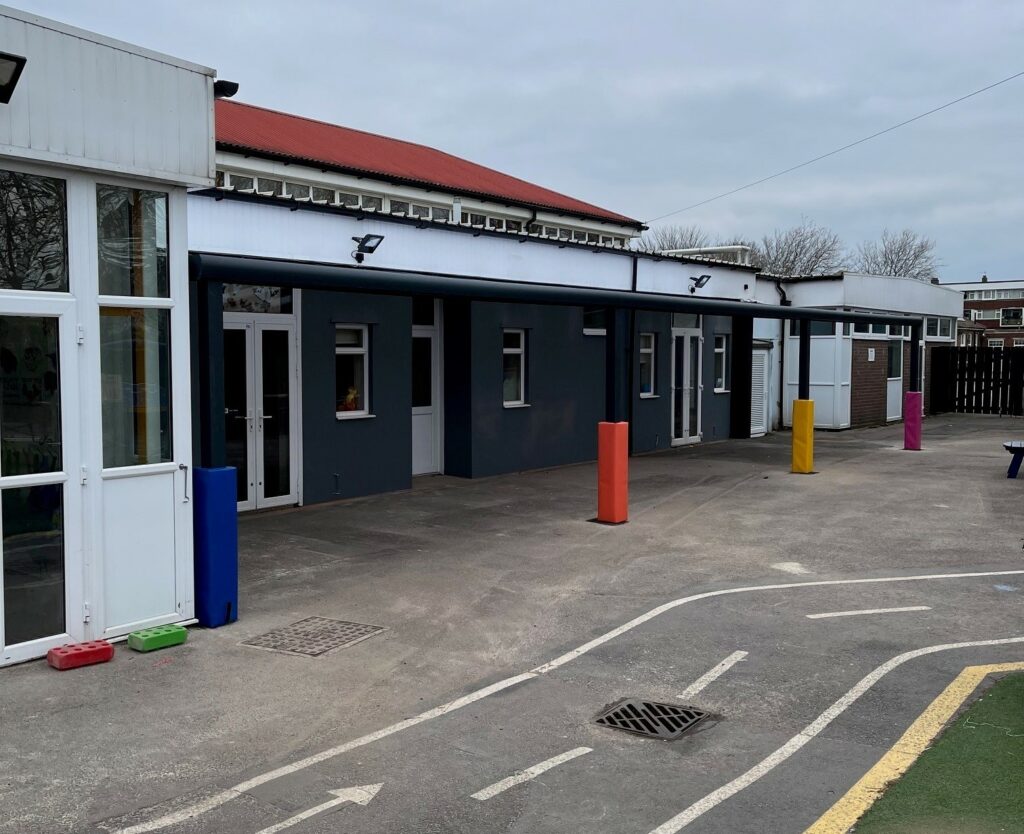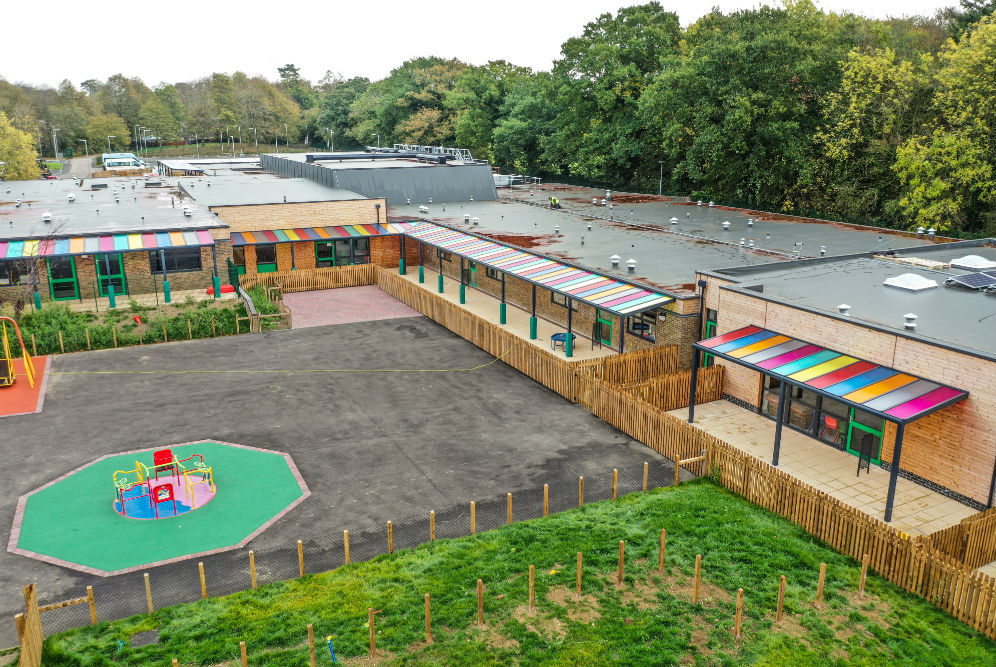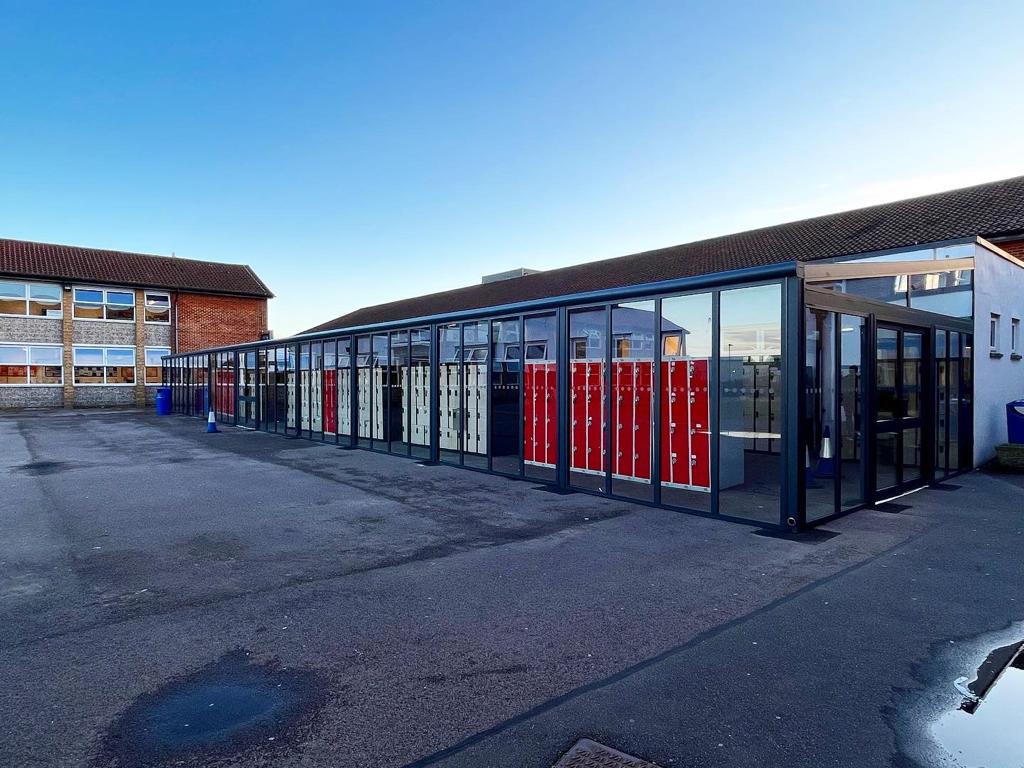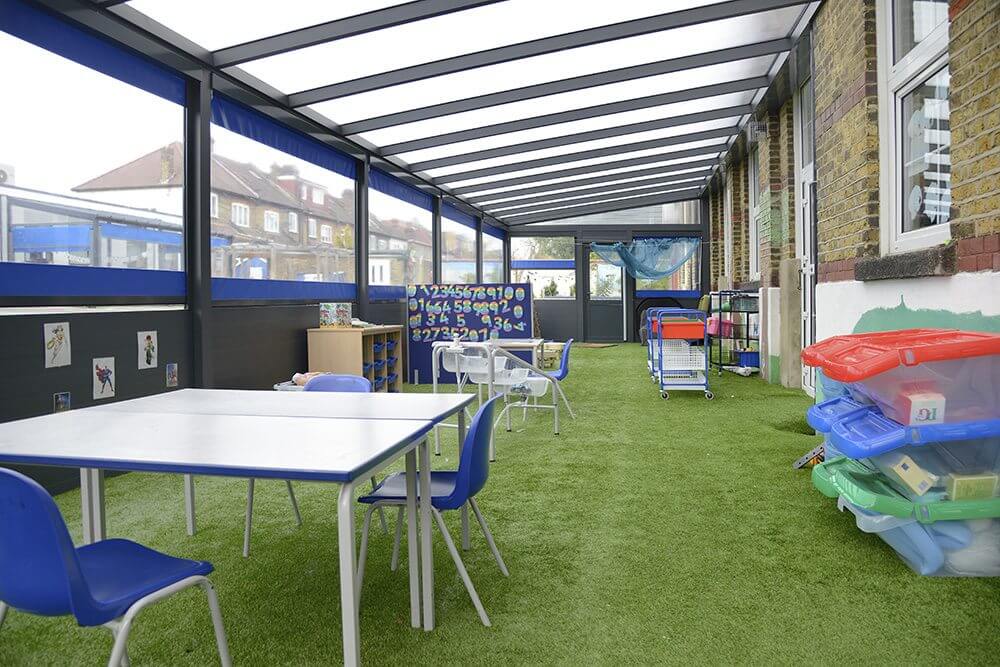
What accessories can you add to a canopy?
Research shows how interacting with nature and being outside improves our health and wellbeing. From improving concentration levels to brightening our mood, there are a host of benefits.
Canopies are an excellent way of encouraging this interaction, helping schools to provide better facilities for outdoor learning or allowing restaurants to increase their covers.
And canopy accessories can assist this even further. In this blog, we identify what accessories are available and the benefits of adding them to a canopy.
Post pads
Post pads are a great option for schools or venues where children are likely to be running around and interacting with the canopy, like soft play centres.
Manufactured from 50mm-thick high-impact foam, they provide protection around the canopy posts to significantly reduce the chances of injury.
Furthermore, the fire retardant pads are complete with a washable PVC to allow for easy maintenance and are available in a wide range of colour options to suit the surrounding environment.
Giving your canopy this added protection can help to create a more inspiring outdoor environment that allows children to play freely and gives both teachers and parents greater peace of mind.
Heaters
Unlike post pads, heaters are a more versatile accessory that can be used on canopies in any industry.
With a built in radio receiver to allow for remote control operation, heaters allow schools or restaurants to create a warm and comfortable space throughout the colder months.
In addition to this, the heater fixing can pivot 90 degrees to provide full coverage underneath the canopy, and ensure the accessory is as economical and environmentally conscious as possible, with 92% of the electricity used converted to heat.
But whilst the heater is able to warm the canopy, side panels will need to be added to retain the heat, which leads us nicely on to our next accessory.
Side panels
As previously mentioned, side panels are a great way of retaining the warmth provided by a heater, and are available in three options; glass, aluminium or polycarbonate.
Glass side panels provide maximum protection from the elements, allowing natural light through and a clear view out to the surrounding environment. You should always ensure glass panels are installed with manifestation to make it obvious the glass is there.
The panels can cover a length up to 6m long and 2.8m high, and are made from 8mm toughened safety glass.
Polycarbonate meanwhile is comprised of 16mm multi-wall material and is a more cost effective option compared to glass. But while polycarbonate still allows natural light into the space, it does not provide as clear a view to the outside.
Aluminium panels offer excellent protection from the elements and are constructed of 150mm x 16mm aluminium profiles. Available in a wedge, side wall and front wall configurations, they can be colour matched to the canopy.
Side panels allow schools or restaurants to be creative with their canopy, and provide a unique space. For example, Tolworth School in Surbiton used glass panels to create a secure locker space for their pupils, as you can see below. Click here for more information about the project.
An area where we would not recommend side panels, though, would be a nursery or schools with younger children.
Sliding glazed doors
Similarly, sliding glazed doors are not a suitable canopy accessory for schools with young pupils or a busy thoroughfare.
While they’re mostly suited to a residential environment, sliding glazed doors could provide secondary schools or restaurants with a more versatile option, as the aluminium bottom track allows the doors to seamlessly glide to open and close, depending on the weather.
Moreover, the doors can be stacked to one side or split to stack at both ends to add to the versatility of the space, and can be fitted with a foot-operated lock for ease of use.
For additional protection from the elements, draught excluders for the glass edges can be added.
Aluminium doors
If you’re looking to create a secure space, similar to the Tolworth project, then aluminium doors are an excellent option.
Available in a range of colours, including colour matching to the canopy, aluminium doors can provide both electronic and manual access, but should always include a system with anti-trap hinges for safety purposes.
Furthermore, they can be fitted as either a solid aluminium door, or as a glazed door with an aluminium frame.
Similar to heaters, aluminium doors are an incredibly adaptable accessory able to be fitted to canopies in any industry.
Zip Blinds
External zip blinds provide shelter from the elements without completely enclosing a canopy with a side panel.
Though they should not be considered a permanent solution to weatherproofing your canopy, zip blinds are designed to provide glare control and, as they are retained within the side channels, excellent protection from wind and rain. However, they would need to be retracted in heavy winds.
The blinds are available in three fabric choices and can either be manually operated or motorised blinds controlled via a radio remote control switch. Motorised systems can be fitted with wind sensors to allow them to retract automatically when the wind speed reaches a certain level.
LED lighting
Dimmable LED lighting can add another element to the canopy, creating a warmly lit external dining area for restaurants, or allowing schools to have outdoor learning during the darker winter months.
Though the lighting requires cabling, this can be seamlessly integrated within the frame to remove the possibility of the cable becoming a hazard, but this must be done at the installation stage.
Conclusion
There are a plethora of accessories available to fully maximise your canopy, but it’s extremely important to consider the surrounding environment before making a decision on what options to choose.
If you’d like to discuss canopy accessories or have any projects coming up in the future, please contact us here and one of our expert team will assist you.


